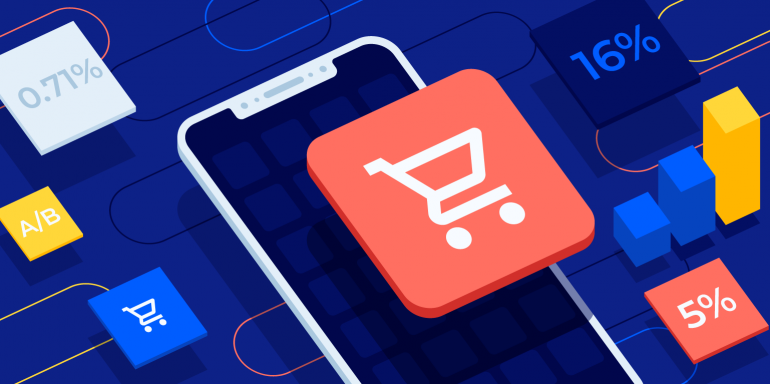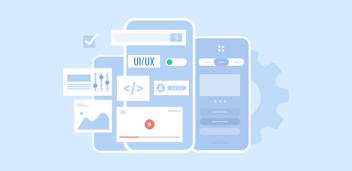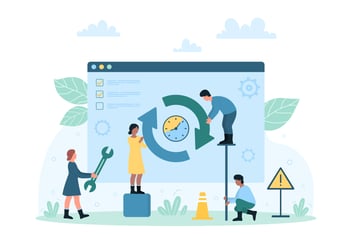Have you ever walked into a store and immediately felt drawn in? The ambiance, the neatly arranged products, the helpful staff - everything seems to be meticulously designed for you. That's what custom ecommerce web design does for your online business. It creates an irresistible virtual space that customers can't help but explore.
You might ask yourself: Can I create an engaging experience on my website? Is it worth investing in custom designs instead of using user-friendly templates?
I was once there, too, asking those same questions...
In this guide, we'll demystify how custom ecommerce web design works to transform browsers into buyers. You'll learn about selecting ecommerce platforms tailored to your needs and enhancing user experiences through effective navigation and mobile optimization.
We've got loads more coming up! Ready to take a deep dive?
Table of Contents:
- Understanding Custom Ecommerce Web Design
- Key Elements of a Successful Ecommerce Website Design
- Choosing Your Ecommerce Software Stack
- Enhancing User Experience in Custom Ecommerce Web Design
- Maximizing Sales Through Effective Web Design
- Providing Excellent Customer Support
- Future Trends in Custom Ecommerce Web Design
- FAQs in Relation to Custom Ecommerce Web Design
- Conclusion
Understanding Custom Ecommerce Web Design
When you're venturing into the online business landscape, having a custom ecommerce web design is more than just an aesthetic choice. It's about creating a digital storefront that speaks your brand language and caters to your specific business needs.
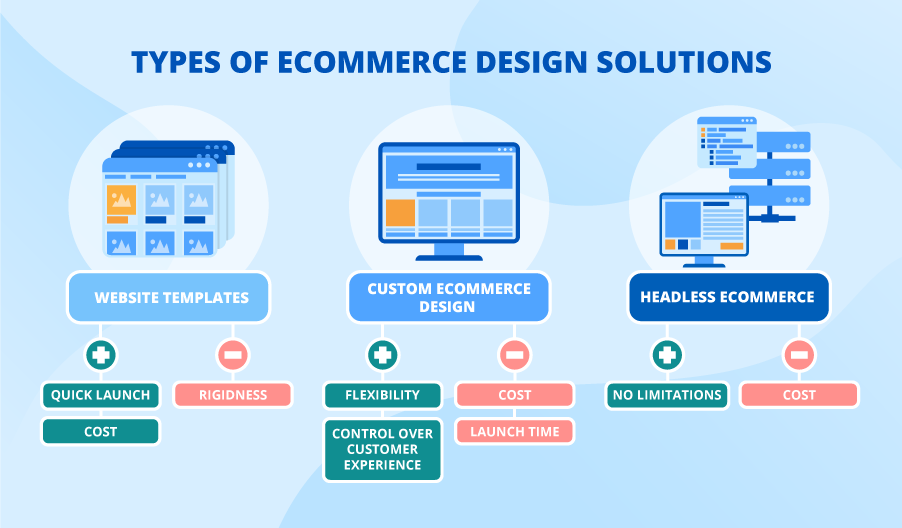
The beauty of custom ecommerce websites, like those built on Shopify (which holds 29% of the market share), lies in their flexibility. With over 3.7 million live eCommerce websites using this platform alone, it's evident that businesses are recognizing the value of customization.
Ecommerce website development services play a crucial role in tailoring these platforms to suit unique business requirements - from setting up product catalogs to integrating payment gateways for seamless transactions. But what exactly goes into making such custom solutions?
User Experience Is King
In today’s hyper-competitive e-commerce space, user experience can make or break your online store. A website that is well-constructed should be simple to use and straightforward, aiding customers in locating what they require quickly and with no fuss.
A Platform That Suits Your Business Needs
Selecting an ecommerce platform isn't one-size-fits-all – it depends on various factors, including budget constraints, desired features, scalability needs, and technical expertise available within your team. Some online businesses might opt for ready-made templates, while others prefer building from scratch with programming languages, all aiming at enhancing customer interaction with their products or services online.
Customization: More Than Just Visuals
Your e-commerce site represents who you are as a brand - it should reflect how good you look and how effectively you operate. Customizations can include everything from layout and color schemes to custom checkout processes, all tailored to deliver a unique shopping experience for your customers.
In essence, the art of creating an ecommerce website is about crafting an online presence that aligns with your brand's vision while delivering on user expectations. It's more than just setting up a virtual shop; it’s about building an e-commerce platform designed specifically for you - reflecting who you are as a business while meeting customer needs effectively.
Custom ecommerce web design is more than just pretty visuals. It's about building a digital storefront that not only reflects your brand but also meets unique business needs. By prioritizing user experience, selecting the right platform, and incorporating custom features, you can create an online store that boosts customer interaction and drives sales.
Key Elements of a Successful Ecommerce Website Design
Creating a successful ecommerce web design requires the assembly of several essential components, just like constructing a high-performance engine. It's like assembling a high-performance engine; every part has its role and must work together seamlessly.
Website Design and Development Services
A robust web design is the backbone of any successful online store. It’s not just about aesthetics but also functionality. For example, Shopify holds 29% market share in ecommerce platforms, largely due to their focus on providing user-friendly templates alongside development services.
Responsive Design
A website that adjusts seamlessly across different display sizes can be the key to acquiring or losing customers. A site that adjusts flawlessly across different screen sizes can be the difference between gaining or losing customers.

Product Catalog and Descriptions
Your product catalog should be as appealing as the fresh produce section at your favorite grocery store – colorful well-organized, with crisp product descriptions. Detailed yet concise descriptions help customers make informed decisions, while shopping carts simplify their purchasing process.
The Checkout Process & Payment Gateways
The checkout process must feel secure yet straightforward for users making purchases on your e-commerce platform. Think of payment gateways like dedicated cashiers who efficiently handle transactions while ensuring data safety measures are in place, such as PCI compliance.
Familiarizing yourself with these key elements equips you better when choosing from multiple e-commerce software stacks available today.
Note: This guide doesn't include comprehensive steps on how to build a website or detailed insights into specific web hosting providers’ pros and cons because those topics would require dedicated articles themselves. No need to worry, as our other sections provide all the information you require.
Choosing Your Ecommerce Software Stack
Your ecommerce software stack can make or break your online store. It's not merely about accomplishing the task but rather doing it in a proficient and successful manner.
Evaluating Your Options - From Website Builders to Hosting Providers
When selecting an online store, there are numerous choices available. Website builders like Bluboho, for instance, provide user-friendly templates and features that let you get started quickly. But don't stop there. Explore more choices, such as hosting providers that control server resources, making them a viable option if you anticipate high traffic volumes on your site.
Remember, though, while website builders may offer convenience with their drag-and-drop functionality, they might limit customization capabilities compared to using custom ecommerce web design services from companies like DePalma Studios.
Prioritizing Security Measures & PCI Compliance
No matter how fancy your e-commerce platform is, it’s as good as leaving the doors of a brick-and-mortar shop wide open overnight without adequate security measures.
Apart from protecting sensitive customer information (like credit card details), ensuring secure sockets layer (SSL) encryption also boosts search engine rankings - something every business owner would love.
Moving further down our list of priorities is Payment Card Industry Data Security Standard (PCI DSS) compliance – this keeps customers' payment card data safe during transactions. Trust me; nothing kills an online retail business faster than a breach of trust due to poor security measures.
Now, I bet at least some readers here have dabbled into coding before — perhaps even built small applications or websites themselves. Great. This experience will be beneficial when selecting website development services for creating custom ecommerce websites. For others who are just getting their feet wet in this world of e-commerce web development — don’t worry. Building an eCommerce website can be time-consuming, but hiring a website designer saves expenses.
Choosing the right software stack is crucial for a custom eCommerce website - whether selling online as a hobby or running a full-blown business.
Basically, it's all about you.
Whether you're starting out or scaling up, picking the right ecommerce software stack is crucial for your online store's performance. You've got a ton of options—from easy-to-use website builders to hosting providers that can handle heaps of traffic. But don't forget: custom web design services give you more room to make things uniquely yours compared to drag-and-drop solutions. And hey, don't cut corners on security—it's key in keeping customer info safe and giving your SEO rankings a nice little boost.
Enhancing User Experience in Custom Ecommerce Web Design
The art of creating a custom ecommerce web design revolves around the user experience. It's not just about pretty product images and catchy descriptions, but also making sure your customers easily navigate through your online store.
Your website navigation and structure should be intuitive. A confused visitor is likely to leave without making purchases. Construct an easy-to-follow menu for visitors to find what they need quickly and conveniently.
 ecommerce product page example
ecommerce product page example
Visual Content & Wishlist Management
Product images and visual content, when done right, can enhance the shopping experience significantly. Clear, high-quality photos give potential buyers a better idea of what they're getting - much like window-shopping in real life.
Apart from good visuals, allowing users to manage their own wishlists makes them feel more engaged with your site – as if they’re personalizing their own corner of it. Wishlist management features help retain customers. This feature gives people something to come back for - even if they weren't ready to buy on their first visit.
Social Proof & Mobile Optimization
"Hear ye, hear ye." This saying might be familiar. "People trust people." That’s why adding customer reviews (or social proof) could work wonders on convincing other shoppers about the quality of your products or services.
In our digital age, where mobile devices are almost ubiquitous, mobile optimization is no longer optional; it's a must. Ensuring your site looks good and functions well on all types of devices is crucial for capturing the growing market of mobile shoppers.
Remember, enhancing user experience in custom ecommerce web design doesn't stop at making your website look good - it also involves making it feel suitable to use. So, pay attention to how customers interact with your online store and adjust accordingly.
Custom ecommerce web design is all about the user experience. Keep navigation simple and intuitive, use high-quality visuals for products, and let users personalize their shopping with wishlists. Add customer reviews to boost trust and make sure your site works perfectly on mobile devices too. Always watch how customers interact with your store so you can tweak it to feel just right.
Maximizing Sales Through Effective Web Design
Revenue is essential for any e-commerce website's success. Did you realize that the way your website is designed can have a considerable effect on your profits? Let's explore how.
Effective Call-to-Action Buttons
The call-to-action (CTA) buttons serve as guides, directing visitors to make purchases. An effective CTA button is well-placed, visually appealing, and uses persuasive language. It should be impossible for users to ignore them.
Streamlined Checkout Process
A complicated checkout process can frustrate customers and lead them to abandon their shopping carts mid-purchase. So streamline it. Make sure the steps are clear, minimize page loading times Shopify's SaaS model excels in this, offers multiple payment options including payment gateways, and ensure security measures like PCI compliance are in place.
Flexible Shipping Options & Rates
Your shipping software needs to provide flexibility with rates and delivery methods while keeping the costs transparently displayed during checkout - no surprise charges please. This transparency will build trust among your online shoppers leading them back for more purchases.
Ecommerce SEO Optimization
You could have the best products in town but if potential buyers cannot find you via search engines then sales may dwindle down fast. A good ecommerce web design considers SEO optimization from day one – structuring URLs properly, using relevant keywords within product descriptions or blogs posts which improve ranking over time making it easier for people looking up items related specifically towards what they want/need at moment notice without needing external tools other than their preferred search engine such as Google or Bing.
According to a BuiltWith trend report, Shopify, which is known for its SEO optimization features, holds 29% of the market share and is the most widely used eCommerce platform.
From startups to well-established corporations, we've lent a hand at DePalma Studios. We've enabled them to successfully launch their online retail endeavors.
Boost your online sales with intelligent web design. Make sure to use compelling Call-to-Action buttons and a streamlined checkout process for better customer experience. Keep shipping options flexible and transparent while also prioritizing SEO optimization from the get-go. Partnering with experts like DePalma Studios can help you launch successful ecommerce ventures.
Providing Excellent Customer Support
Your store's prosperity relies on a captivating product selection and the customer service you deliver. A well-structured help center, robust live chat features, and a transparent feedback mechanism can make all the difference.
Empower Customers with Live Chat and Chatbots
In this digital age where instant gratification is key, customers appreciate immediate responses to their queries. Implementing live chat services or intelligent AI-powered chatbots into your custom ecommerce web design gives users real-time help while making purchases.
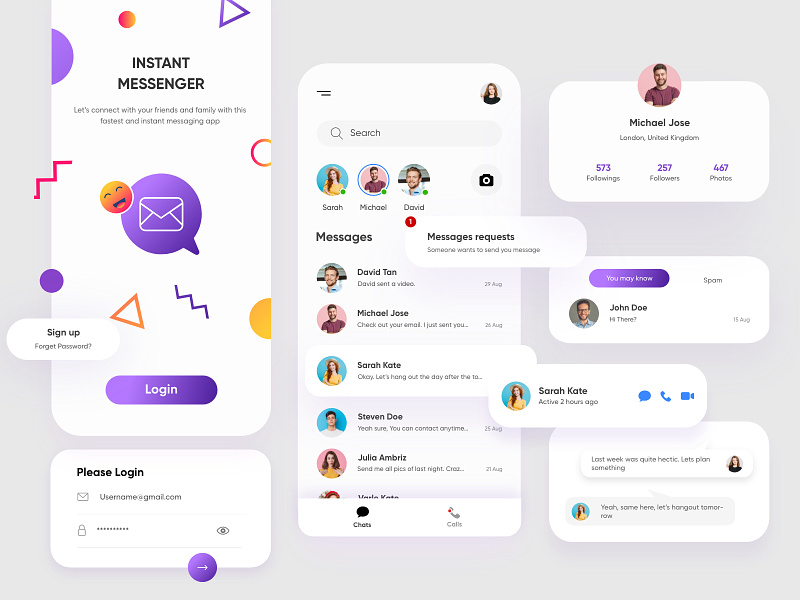 Chatbot design example
Chatbot design example
This level of responsiveness isn't only beneficial for shoppers but also helps businesses by reducing cart abandonment rates. Additionally, it allows you to collect valuable data about common questions or issues hindering your conversion rate.
The Role of Help Centers and FAQs
A comprehensive FAQ section on your website serves as a self-help tool for visitors who prefer finding answers themselves before reaching out directly. Similarly, having an easily navigable help center enhances user experience because customers can quickly find solutions without waiting for assistance from customer service representatives.
Besides improving user satisfaction levels, these resources save time and resources since fewer people need direct intervention from your support team. Thus creating more efficiency within your organization itself.
Contact Forms & Collecting Customer Feedback
Having contact forms readily available across different pages ensures users always have a way to reach out if they encounter any problems during their shopping journey - another essential element in providing excellent customer service.
Collecting regular feedback from customers via these forms offers valuable insights into what’s working well in your e-commerce site and areas needing improvement – this is crucial in refining your offerings and enhancing overall customer satisfaction.
Keep Customers Informed with Order Tracking & Notifications
Wrapping up, incorporating order tracking into your online store's design lets customers effortlessly keep tabs on their orders. Quick updates about shipping status help keep shoppers in the loop, easing worries about delivery times and boosting confidence in your brand.
For understanding your customer's needs and improving their shopping experience. Don't forget to use social media platforms as another channel for customer interaction. It's a cost-effective way of providing help, engaging with customers, and promoting your products at the same time.
Future Trends in Custom Ecommerce Web Design
The digital landscape is always evolving, and ecommerce web design trends are no exception. By understanding the latest developments, businesses can stay ahead of the curve and create engaging online stores that resonate with customers.
AI Personalization in Ecommerce Web Design
Artificial Intelligence (AI) has been a game-changer for custom ecommerce. With AI personalization, websites can deliver unique shopping experiences based on individual customer behavior. Imagine landing on an online store where product recommendations perfectly match your taste - this isn't just possible; it's becoming expected.
Voice Commerce: The New Frontier?
Voice commerce represents another exciting trend shaping the future of ecommerce web design. It allows users to make purchases using voice commands via smart devices like Amazon's Alexa or Google Home (source). Consumers who prioritize convenience are increasingly embracing this hands-free shopping experience.
The Power of AR/VR Product Visualization
No more guessing how that couch will look in your living room. Augmented and Virtual Reality have enabled shoppers to virtually 'test-drive' products before purchasing, increasing confidence in the buying decision and reducing returns. These immersive experiences boost buyer confidence and reduce return rates, making them a win-win for both businesses and shoppers alike.

Social Commerce Integration: A Seamless Shopping Experience
E-commerce platforms aren't just about standalone websites anymore; integrating with social media channels offers new ways to reach potential buyers right where they spend their time. Platforms such as Instagram now let users purchase products directly from posts – effectively turning social browsing into instant buying opportunities (source).
Blockchain Technology in Ecommerce Transactions
Although often associated with cryptocurrencies like Bitcoin, blockchain technology also finds its way into ecommerce. By providing a secure and transparent method for transactions, blockchain has the potential to increase trust among customers while reducing fraud.
To wrap up, these trends are set to shape the future of custom ecommerce web design. It's an exciting time for online retail - those who adapt will thrive.
Custom ecommerce web design is continuously evolving with new trends like AI personalization, voice commerce, AR/VR product visualization, and social commerce integration. These advancements let online stores provide unique shopping experiences tailored to individual customer behavior. Also on the horizon is blockchain technology for secure transactions. Staying updated and adaptable ensures businesses thrive in this dynamic digital landscape.
FAQs - Ecommerce Web Design
How do I create a custom ecommerce website?
To craft a custom ecommerce site, you need to pick the right platform, design your layout, add products and descriptions, and then set up payment gateways. It's best to work with an expert web designer.
How much does it cost to design an ecommerce website?
The price of designing an ecommerce site varies greatly - from $10k to $100k. Costs hinge on the features needed and the complexity of the project.
What is custom ecommerce?
A custom eCommerce solution is specifically tailored to your business needs. It gives you more control over look & feel, functionalities, and scalability than standard platforms can offer.
How do you style an ecommerce website?
You style an e-commerce site by focusing on user-friendly navigation structures, high-quality product images or visuals, responsive designs that cater to mobile users, and seamless checkout processes.
Conclusion
Custom ecommerce web design is a game-changer. It's all about creating that 'wow' factor for your online store, just like an appealing brick-and-mortar shop does.
You've now learned the importance of user experience and responsive design, as well as secure payment gateways and shopping carts in your web development journey. Selecting the ideal e-commerce platform is essential for customizing it to your specifications.
Improving user experience through effective navigation and mobile optimization isn't rocket science anymore. You can maximize sales with call-to-action buttons, streamlined checkout processes, and flexible shipping options - all wrapped up under SEO optimization.
The cherry on top? Stellar customer support! Chatbots or live chat; FAQs or order tracking notifications - you choose what suits best for your customers!
Ahead lies future trends like AI personalization and AR/VR product visualization waiting to be explored... So keep pushing boundaries with custom ecommerce web designs because there’s always room for improvement!

